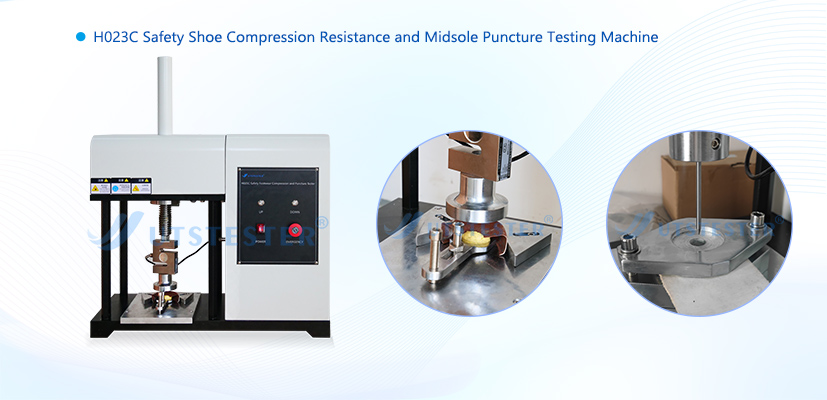 +86 152 6060 5085
+86 152 6060 5085
 +86 152 6060 5085
+86 152 6060 5085
Blog
Catalog
Latest Blog
In the field of occupational safety and health, the EN ISO 20345:2022/A1:2024 standard serves as the authoritative specification for personal protective equipment—safety footwear. It provides comprehensive guidance for the design, manufacturing, and testing of safety shoes. This article will delve into the key testing requirements outlined in the standard to enhance understanding of its performance specifications for safety footwear.
Key Test Standard Requirements
1. Impact and Compression Testing
The primary function of safety footwear is to protect feet from impact and compression injuries. The EN ISO 20345:2022/A1:2024 standard requires safety footwear to withstand at least 200 joules of impact energy (equivalent to a 20-kilogram object dropped from a height of 1,020 millimeters) and 15 kilonewtons (kN) of compression force (equivalent to a 1.5-ton weight applied to the toe area). These tests evaluate protective performance by simulating real-world workplace risks of heavy object impacts and crushing injuries.
2. Puncture Resistance Testing
Puncture resistance testing is a critical metric for evaluating the ability of safety shoe midsoles to resist penetration by sharp objects. The EN ISO 20345:2022/A1:2024 standard provides detailed specifications for puncture resistance testing, including test methods for both metallic and non-metallic puncture-resistant inserts. For metal anti-penetration plates, the standard requires no more than 3 corrosion points, with an average area not exceeding 2mm². For non-metallic anti-penetration plates, such as composite materials (PL and PS types), the standard requires no perforations after multiple tests and no separation of layers.
3. Slip Resistance Testing
Slip resistance is a critical characteristic of safety footwear, particularly in wet, slippery, or oily work environments. The EN ISO 20345:2022/A1:2024 standard has eliminated the previous SRB and SRC slip resistance ratings, revising the requirements for slip resistance testing. Currently, slip resistance testing is primarily conducted on ceramic tile surfaces using dodecyl sulfate solution. For specific requirements, additional glycerin testing may be performed. Furthermore, testing locations have shifted from the heel and midfoot to the first and third sections of the sole, as well as the heel and forefoot areas, enabling a more comprehensive evaluation of safety footwear's slip resistance performance.
4. Additional Tests
Beyond the fundamental tests outlined above, the EN ISO 20345:2022/A1:2024 standard specifies several supplementary tests to address specific requirements in diverse work environments. These additional tests include electrical conductivity testing, antistatic testing, thermal insulation testing, and waterproof testing. For instance, the waterproof test requires safety footwear to maintain an internal dry environment under specified conditions, preventing moisture penetration that could cause foot injuries.
The EN ISO 20345:2022/A1:2024 standard finds extensive application across all industries. Whether in manufacturing, construction, agriculture, or other sectors requiring safety footwear, adherence to this standard is mandatory for selecting and using safety shoes. These testing standards not only ensure the protective performance of safety footwear but also enhance workers' safety and comfort on the job. Simultaneously, the standard provides manufacturers with clear guidance and requirements, contributing to the standardized development of the entire industry.

Email: hello@utstesters.com
Direct: + 86 152 6060 5085
Tel: +86-596-7686689
Web: www.utstesters.com